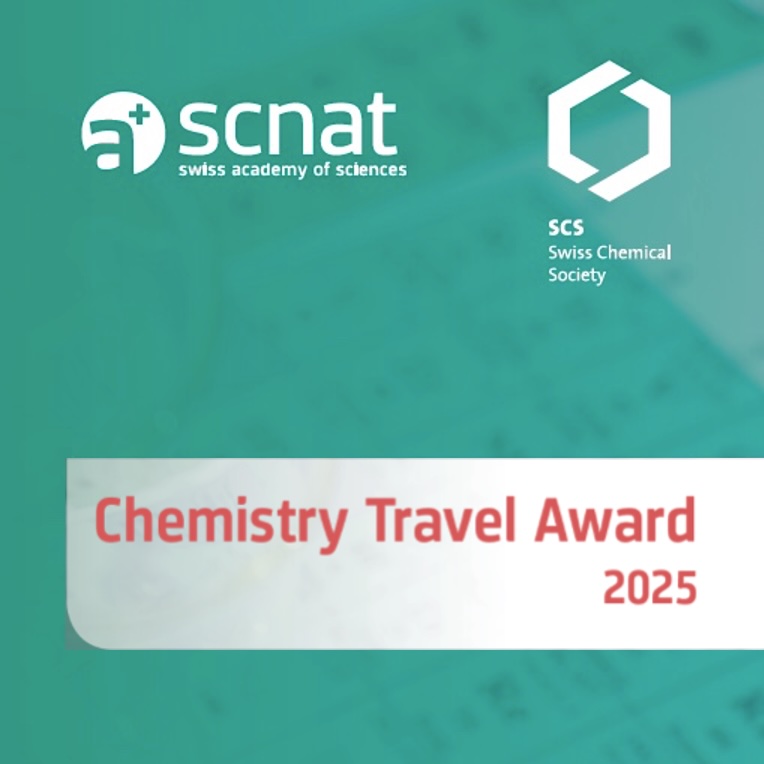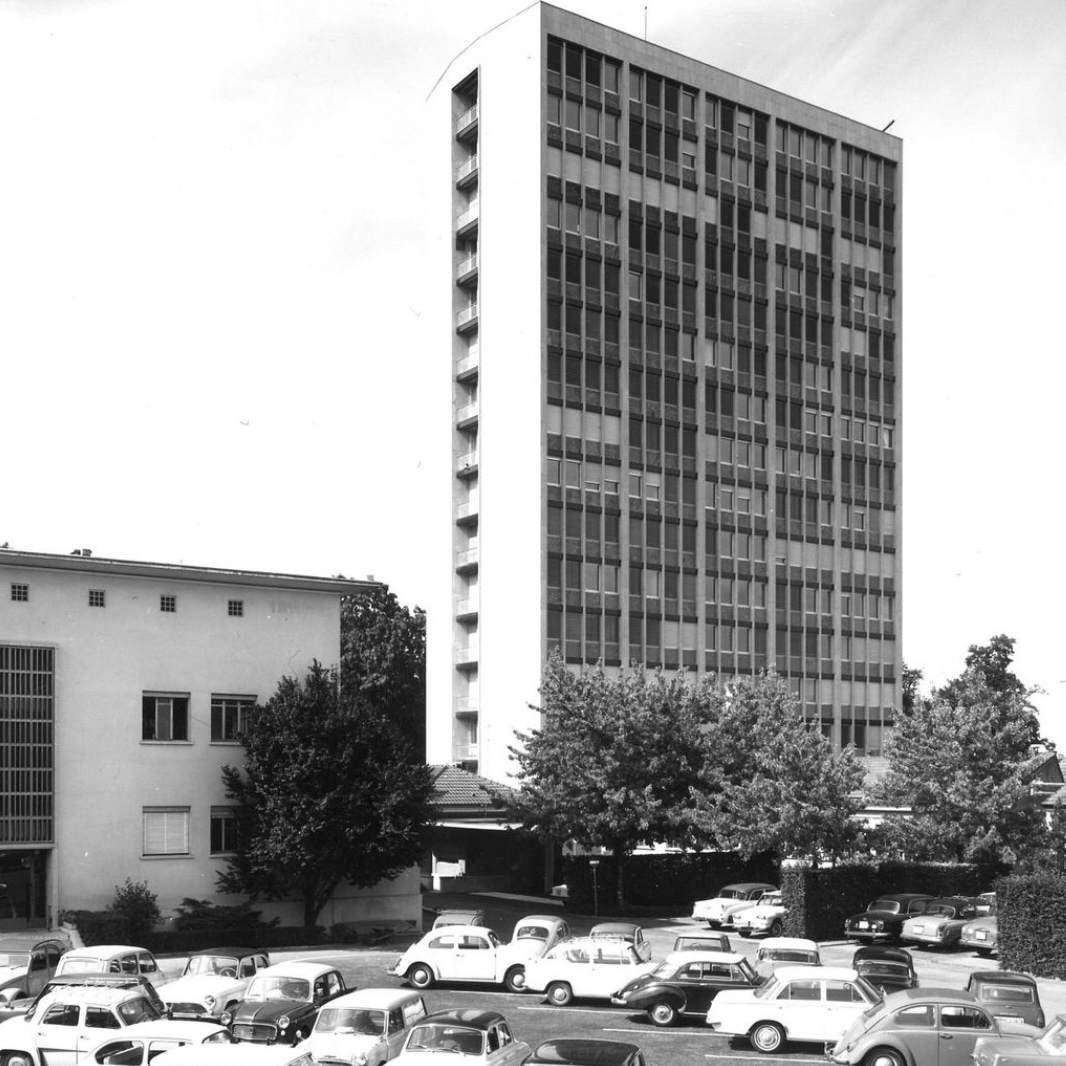EuChemS Magazine, February 2025
EuChemS News, Policy News, Events, Awards
Find our monthly compilation of science related European policy developments and EuChemS news in this newsletter. Take a look at our headline stories or read the magazine by clicking on the button below.
Read the complete EuChemS Magazine Plus
EuChemS News
- EuChemS organised Global Women’s Breakfast 2025 to empower women in science and innovation
- EuChemS publishes its 2024 Yearbook
- EuChemS event on ‘The Rare Earth Elements: These high-tech enablers’
Policy News
- STOA Conference explores academic freedom and democracy
- European Commission launches ‘Competitiveness Compass’ to strengthen EU’s global position
- Towards an Ambitious FP10: The CEPS report and launch event
Read the full magazine on: https://www.magazine.euchems.eu/
David Spichiger, SCS
16.01.2025

Chemistry Travel Award 2025: Application open until March 31
 Through the «Chemistry Travel Award», contributions towards the cost of participation at an international conference in the chemical sciences are granted to selected PhD students. The award is sponsored by the Platform Chemistry of the SCNAT and the Swiss Chemical Society (SCS).
Through the «Chemistry Travel Award», contributions towards the cost of participation at an international conference in the chemical sciences are granted to selected PhD students. The award is sponsored by the Platform Chemistry of the SCNAT and the Swiss Chemical Society (SCS).
You can win a contribution of CHF 1000.- to actively present at an international conference.
Application criteria
Applicants must be doing her/his PhD at a Swiss institution at the time of the deadline (March 31, 2025)
- The conference must be related to chemistry (any domain of chemistry)
- Active participation (poster or talk)
- Conference must take place outside Switzerland
- Conference must last at least 3 days
- Conference must take place between May 15, 2025 and May 14, 2026
- Deadline for application is March 31, 2025 (23:59)
Submission requirements
- Abstract
- CV with a list of publications (2 pages max)
- Recommendation letter from advisor
Winners must present the certificate of attendance within 60 days after the conference to receive the reimbursement.
Every year, we receive many e-mails asking the same questions. Therefore, we kindly ask you to please read the FAQ before applying here.
David Spichiger, SCS / Leo Merz, SCNAT
06.02.2024
EuChemS Magazine, January 2025
EuChemS News, Policy News, Events, Awards
Find our monthly compilation of science related European policy developments and EuChemS news in this newsletter. Take a look at our headline stories or read the magazine by clicking on the button below.
Read the complete EuChemS Magazine Plus
EuChemS News
- Reaching for the Quarks: EuChemS 2025 Global Women's Breakfast
- EuChemS President signed IUPAC Proclamation on funding for basic chemical research
- Key facts about EuChemS at the beginning of 2025
Policy News
- Poland starts EU Council Presidency in 2025
- Switzerland strengthens ties with the European Union
- EU adds 40 hazardous chemicals to PIC Regulation
-
Read the full magazine on: https://www.magazine.euchems.eu/
David Spichiger, SCS
16.01.2025

Swiss Chemical Landmark 2023: They made Geneva the capital of perfume chemistry
 History was made in Geneva in the field of perfume chemistry. The city is now being honoured as a historic site of chemistry. This development was driven by two major fragrances and flavours companies, dsm-firmenich and Givaudan, who now receive the Chemical Landmark award.
History was made in Geneva in the field of perfume chemistry. The city is now being honoured as a historic site of chemistry. This development was driven by two major fragrances and flavours companies, dsm-firmenich and Givaudan, who now receive the Chemical Landmark award.
Picture: Former dsm-firmenich factory building in the district La Jonction.
Image: dsm-firmenisch
Geneva is the cradle and capital of world’s perfume chemistry. Two companies made a decisive contribution to this: dsm-firmenich and Givaudan. In recognition of their important role in perfume chemistry, they have now been jointly awarded the Chemical Landmark of the Swiss Academy of Sciences (SCNAT). With this award, the SCNAT honours sites in Switzerland that have played a historically significant role in advancing the field of chemistry.
A legacy of perfumery icons
In 1895, chemist Philippe Chuit and entrepreneur Martin Naef set up their first perfume laboratory in Charles Firmenich's garage in Geneva. They founded a company to produce synthetic perfumes and flavours. In the same year, the brothers Léon and Xavier Givaudan opened a laboratory to produce fragrances in Zurich but moved to Vernier near Geneva in 1898.
Over the next few years, both companies pioneered the analysis, synthesis and production of fragrances with the help of findings and processes from the emerging field of organic chemistry. One key milestone was achieved by Leopold Ružička, who determined the structure of muscone, the main component of musk, a highly coveted element in the perfume industry. His work on terpenes, which included musk, was awarded the Nobel Prize in Chemistry in 1939.
Today, dsm-firmenich and Givaudan are among the world's leading companies in the fragrance and flavour industry, whose fragrance innovations have shaped countless iconic perfumes.
Source: https://chem.scnat.ch/
Published by David Spichiger, SCS
19.12.2024
EuChemS Magazine, December 2024
EuChemS News, Policy News, Events, Awards
Find our monthly compilation of science related European policy developments and EuChemS news in this newsletter. Take a look at our headline stories or read the magazine by clicking on the button below.
Read the complete EuChemS Magazine Plus
EuChemS News
- Javier García Martínez: Chair of the Scientific Committee at ECC10
- EuChemS welcomes new Executive Board Members
- EuChemS Vice President Floris Rutjes participates in a panel debate at SusChem Stakeholder Event
- Implementing the “Good Chemistry” course: a case study at Jagiellonian University
Policy News
- STOA Panel elects new leadership for 10th parliamentary term
- ERC-funded research accelerates CRISPR/Cas gene-editing advancements
- New Horizon Results Booster helps EU researchers maximise impact
- Ursula von der Leyen highlights Europe’s leadership in renewable hydrogen at Fourth Renewable Hydrogen Summit
Read the full magazine on: https://www.magazine.euchems.eu/
David Spichiger, SCS
18.12.2024
Page 8 of 303

